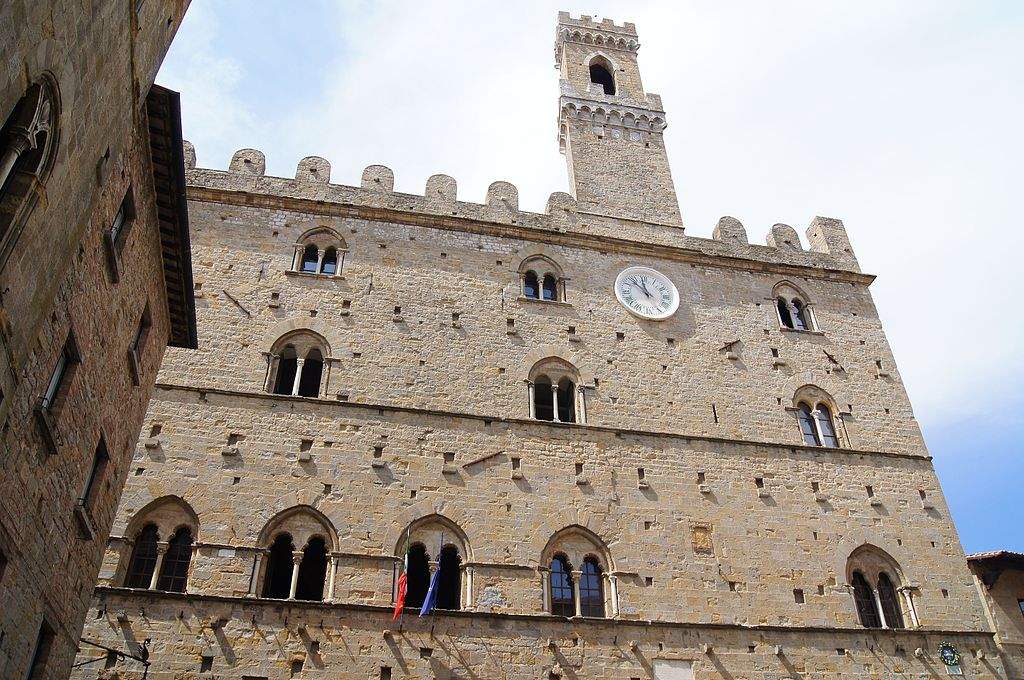On the occasion of the summer opening of the newly restored rooms of the Guarnacci Etruscan Museum in Volterra, the AEVUM exhibition, scheduled at the Palazzo dei Priori in Volterra from July 8 to September 4, 2022, presents a dialogue between artists and works from different eras within a unique timeline, bringing together within the same room precious archaeological artifacts from the permanent collection of the Guarnacci Etruscan Museum of Volterra and works by Akiko Hirai (Japan/UK) and Eleanor Herbosch (Belgium). The vivid, scratching marks made in acrylic and clay of Herbosch’s paintings become written form, approaching that same emotional and mysterious charge of Etruscan writing. Alongside, Hirai’s ceramic sculptures are an expression of an exploration of the idea of contrast, a juxtaposition of raw clay and translucent glaze.
For the AEVUM exhibition, the Guarnacci Etruscan Museum presents three works related, but with a different function, to the Etruscan world of the underworld, a true and profound cult to the deceased destined to live eternally even after physical death. Upon entering the room, the visitor is greeted by a travertine funerary marker from the 4th-3rd century B.C. with a very peculiar shape and inscriptions that are difficult to interpret. In the next space, an impasto ceramic cinerary vessel from the 6th century B.C., simple in its decoration, exciting in the iridescent color of the material, evidence of a complex burial ceremony charged with meaning. Finally, a magnificent alabaster cinerary urn from the 2nd century B.C. concludes the itinerary: the feminine, ethereal, delicate but austere depiction of the lid contrasts with the purely masculine essentiality and world of the container, whose figures modified by time have hidden features but a strong emotional charge.
Contemporary women artists
In the ceramic work of Akiko Hirai, a Japanese artist based in London, everything is interconnected: language, thoughts, feelings and the viewer’s gaze merge into the everyday interactions of our lives. Her skillful manipulation of matter is exposed to the alchemy of the kiln, ensuring that each piece is unique and celebrates imperfection and chance. At the core of Akiko’s practice is both traditional Korean Kohiki ceramics, characterized by a slightly porous surface and soft white color, and the aesthetics of Japanese ceramics with elements of imperfection and incompleteness.
The artistic languages adopted by Eleanor Herbosch are ceramics and painting, united by a common denominator: earth, her material of choice. A graduate of Central Saint Martins in London, Eleanor aims to create an enhanced visual experience that is a pure pleasure for the senses. Ceramics and painting come together harmoniously in an aesthetic that is exquisitely Asian in character; the artist draws on various spiritual practices that emphasize the cleansing of the mind and direct attention toward a heightened awareness of the present, past and future.
The AEVUM exhibition inaugurates the three-year project TIMELESS ENCOUNTERS. MEETINGS BETWEEN CONTEMPORARY ART AND ETRUSCAN ART and participates in the program of Volterra First Tuscan City of Culture 2022.
The exhibition, promoted by Anima Silvae Cultural Association and the Guarnacci Etruscan Museum of Volterra, is made possible thanks to the coordination and contribution of Kalpa Art Living of Volterra and with the support and patronage of Volterra XXII Ri/Human Generation First Tuscan City of Culture 2022, the Region of Tuscany and the Municipality of Volterra, and thanks to the support of the companies Altair Chimica of Saline di Volterra and MATTEOBRIONI srl of Gonzaga (Mantua).
Pictured: the facade of Palazzo dei Priori in Volterra. Photo by Emanuela Giudici
 |
| AEVUM: in Volterra's Palazzo dei Priori, contemporary art dialogues with Etruscan art |
Warning: the translation into English of the original Italian article was created using automatic tools. We undertake to review all articles, but we do not guarantee the total absence of inaccuracies in the translation due to the program. You can find the original by clicking on the ITA button. If you find any mistake,please contact us.